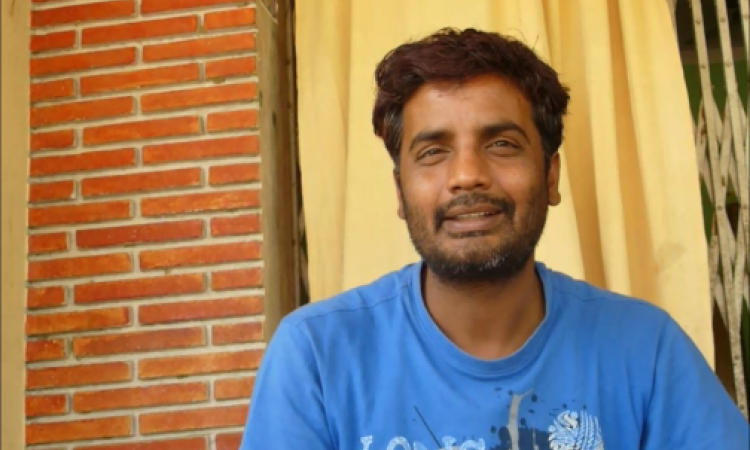
1999 was an interesting real estate year for Mehdiganj village in Uttar Pradesh. Someone began buying up land adjoining a soft drink factory owned by the Parle Company. They also began buying land from the farmers except the farmers had no idea as to whom they were selling the land to. As the boundary wall rose up, problems arose too. It was only later that the villagers realised that Coca Cola (Hindustan Coca Cola Beverages, or HCCB) had acquired Parle in 1999 and had begun to expand the plant in Mehndiganj.
At that point, it was too late to stop any construction.
Given the numerous problems that resulted from this, the villagers decided that they needed a more informed and focused approach to combat them. They approached a small organisation called Lok Samiti headed by Nandlal Master. Lok Samiti decided to study the problem and understand the farmer's demands as well as the Company's position.
Nandlal breaks up the various points of contention into four groups. You can listen to him narrate the story below, or scroll down for a summary.
Land: Coca Cola had bought about 6 acres of land, through which a path that provided access to the village ran. The villagers requested that this path be retained but the Company refused to allow this. Since then, the matter has been fought over up to the state level with mutual accusations of wrong practices and corruption. As of now, Coca Cola retains control of the debated land.
Lok Samiti questions the seeming negligence of the government in this matter, while the law is otherwise intolerant of any encroachment on public land. There is also an issue with the stamp duty paid as there is a discrepancy in the market value of the land as reported by Coca Coal in the purchase papers and in the No Objection Certificate (NOC) from the Department of Industries. A villager filed a PIL in this regard, following which the court stated that as per Coca Cola's own documents, they have underpaid stamp duty by Rs. 1.5 crore. It has since ordered the Company to pay the remainder of the stamp duty within a month along with a penalty of an equal amount. The Company contested this in the High Court and the case is still pending.
Labour: When Coca Cola came to the village, they raised the villager's expectations of employment. At its peak, the factory has about 500 people working in it. Only 25-30 of these 500 are employed; the others are contractual labour. The workers formed a union to demand employment rather than being hired on a daily basis. The Company responded by stating that their dealings were with the labour contractors and that they were not liable to the workers in any way. The workers struck for nearly a week. So what did the Company do? They called in workers from other states such as Orissa and Bihar and fired these workers. They also obtained a restraining order that forbade the local workers from approaching within a 300 meter radius of the village. The workers are still entangled in court cases, and Coca Cola has adopted a policy of hiring workers from outside the state.
Pollution: When production started, the resulting sludge was distributed to villagers to be used as fertiliser. Within a few months however, the fields became encrusted with salt and production declined. This was also the case with wastewater. Farmers handling the wastewater also experienced skin problems. Coca Cola began disposing off the sludge along the road rather than in the fields. This led to waterlogging, which was followed by a long siege of protests. A test of the sludge by the Central Pollution Control Board revealed higher than permissible levels of heavy metals.
The State Pollution Control Board required that the Company treat all waste within its limits. This dealt with the issue of the sludge, but the Company then began releasing their wastewater into a neighboring village. This then led to protests in that village. The Company is now disposing its wastewater underground. Later tests by the Peoples' Science Institute and by TERI confirm that pollution still hasn't stopped, a fact confirmed by physical verification by the Central Pollution Control Board.
Water: Coca Cola produces some 2 lakh litres of soft drinks a day. It takes around 4-5 litres of water to produce 1 litre of soft drinks. The Company admits to using some 5 lakh litres of water a day. A study in 2006 confirmed that 60% of the village's water sources had dried up since the Company began production. This has led to a long struggle between the people of Mehdiganj and Coca Cola, with many mutual allegations of water being wasted.
Coca Cola also declares that it is carrying out rainwater harvesting (RWH). The efficacy of these measures are questioned by the villagers who point out that most of the RWH structures are now defunct and in disrepair. The villagers also resent the magnamious attitude that the Company assumes while talking of its RWH measures while this is infact a legal requirement of any Company that uses groundwater.
Despite the groundwater depletion already visible, the Company has now filed for permission to increase withdrawal by 5 times, from a depth of 1000 feet below ground level. Lok Samiti questions the wisdom of using this deep store of water for commercial uses.
Within 4 years of the Company beginning operations, the groundwater status in the block has moved from 'safe' to 'critical'. What is yet to come in the next four years can only be contemplated.
/articles/open-happiness-or-open-can-worms